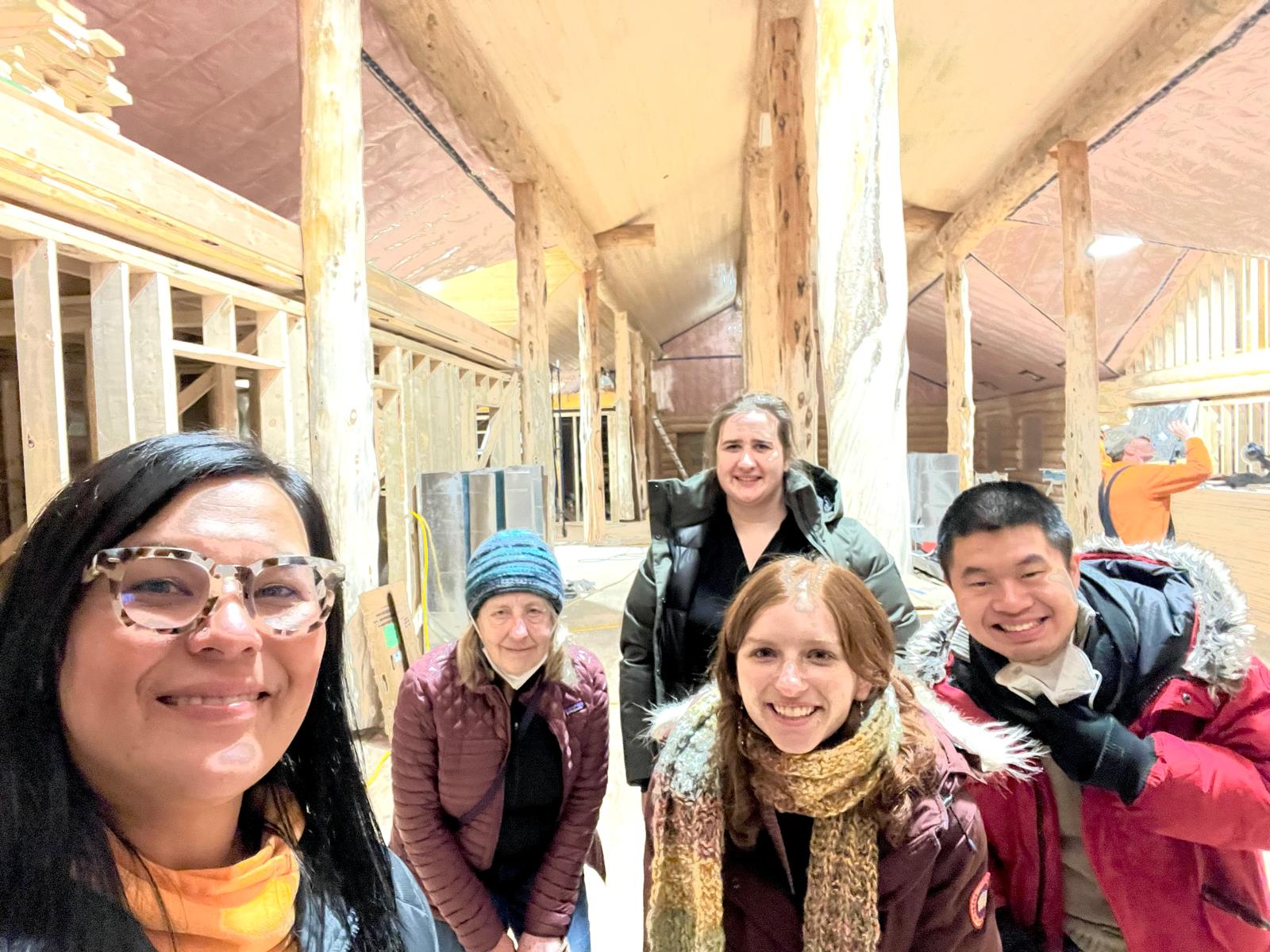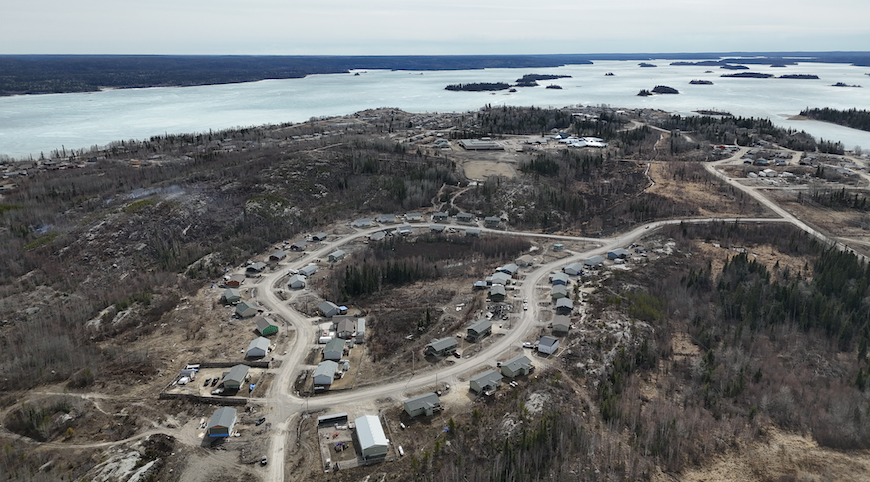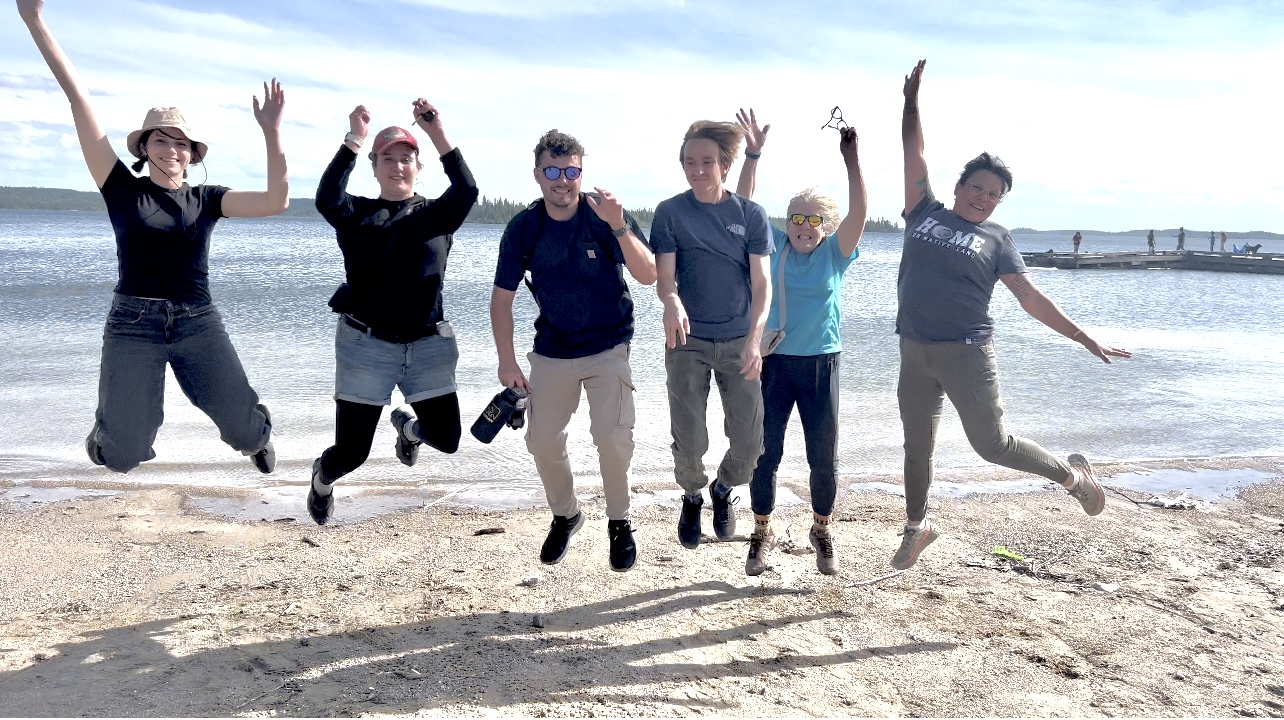No housing, no healing: What’s holding back First Nations housing progress in Canada?

Left to right: Members of the From Harvest to House research team including Natalie Clyke, Penny Kinnear, Helen Stopps (back), Sarah Haines, and Michael Wong.
Canada’s inadequate on-reserve housing in First Nations communities has long been talked about – and there lies the root of the problem. The Auditor General of Canada recently reported that 80% of First Nations housing needs identified 20 years ago remain unmet by Indigenous Services Canada and the Canada Mortgage and Housing Corporation1.
To bring visibility to the complexities of the on-reserve housing crisis, Toronto Metropolitan University (TMU) and University of Toronto (U of T) researchers joined forces with First Nations housing and homelessness professionals and advocates to publish Ten Questions Concerning First Nations On-Reserve Housing in Canada (external link) . The paper breaks down the issues impacting housing efforts in an accessible way to help policymakers, professionals and everyday Canadians better understand this subject matter.
Our work is focused on bridging knowledge, finding resources, and bringing back, in a warrior mindset, these resources to the community and sharing. It all starts with one person at a time, one dialogue at a time, one heart at a time.

Birds-eye view of Pelican Narrows, Saskatchewan, one of the communities the research team has been working with.
A key takeaway from the research is that government funding alone isn’t enough. Many on-reserve communities are restricted to building on land that is unsuitable for construction, such as muskeg or regions where permafrost is rapidly melting. Where construction is possible, remote communities lack access to skilled tradespeople and high-quality materials, leaving band councils to manage construction without expert guidance and resources. External contractors can assist but they typically rely on suburban-home architecture, which doesn’t account for First Nations’ customs or multigenerational families. All of these factors simultaneously halt housing progress and contribute to harmful living conditions, such as poor air quality and overcrowding.
The researchers behind the paper are a diverse women-led team dedicated to enabling healthier, equitable, and sustainable communities: co-principal investigators Helen Stopps, an architectural science professor at TMU, and Sarah Haines (external link) , a civil and mineral engineering professor at U of T, Nicholas Spence a sociology professor at U of T, Becky Big Canoe, a member of the Chippewas of Georgina Island and an Indigenous housing and land justice consultant, and Natalie Clyke, a band member of White Bear First Nations and founder of Rocktree MGO Construction Material Inc (external link) . Since 2022, they’ve collaborated with First Nations communities, alongside a large team of interdisciplinary experts, to define the issues behind the on-reserve housing crisis, operating as the “From Harvest to House” initiative.
We don't have a right to come into these communities and tell them what to do with their housing. Our research is driven by community needs rather than research desires.
Embracing a “shut up and listen” approach, the team gained their data first-hand from those living in on-reserve communities. This supportive research approach provided the team with an intimate look at the lived experiences on reserves; dining with families in their living rooms while hearing about life in an overcrowded house or the illnesses caused by black mold. Clyke notes that these experiences have been vital to building trust between researchers, advocates, and communities.
The team continues their research and dialogue with communities this summer, conducting building condition assessments and measuring the indoor air quality of on-reserve homes in Saskatchewan. By collecting data and sharing recommendations, the team hopes to empower band councils and motivate further action by government bodies.

Left to right: Members of the From Harvest to House research team including Odel Linetska, Helen Stopps, Graham Jones, Daniel Wolinski, Penny Kinnear, and Natalie Clyke.
1 “Housing in First Nations Communities.” Office of the Auditor General of Canada, March 2024, https://www.oag-bvg.gc.ca/internet/English/parl_oag_202403_02_e_44451.html#IG (external link) .

- For media requests and more information, please email Helen Stopps hstopps@torontomu.ca